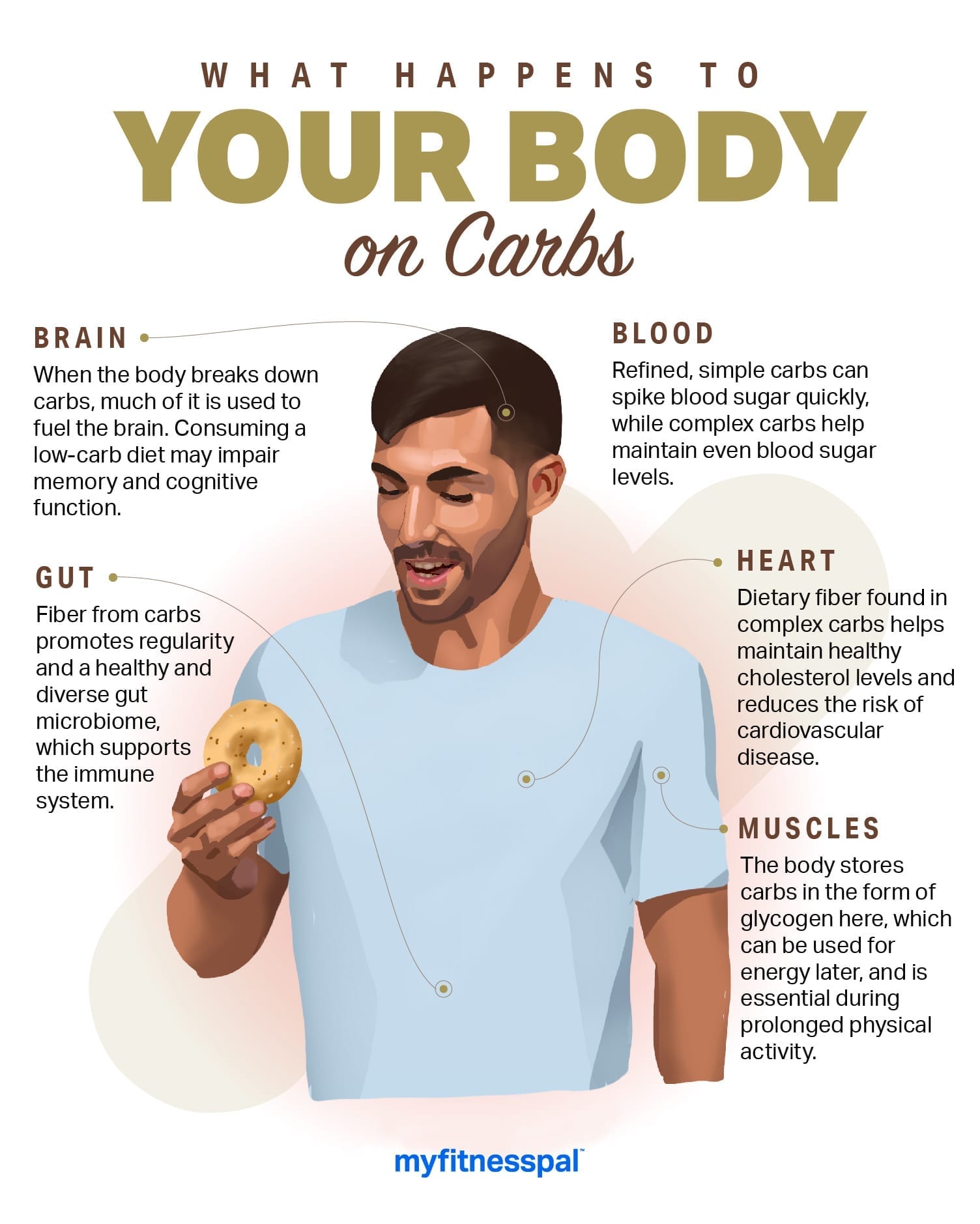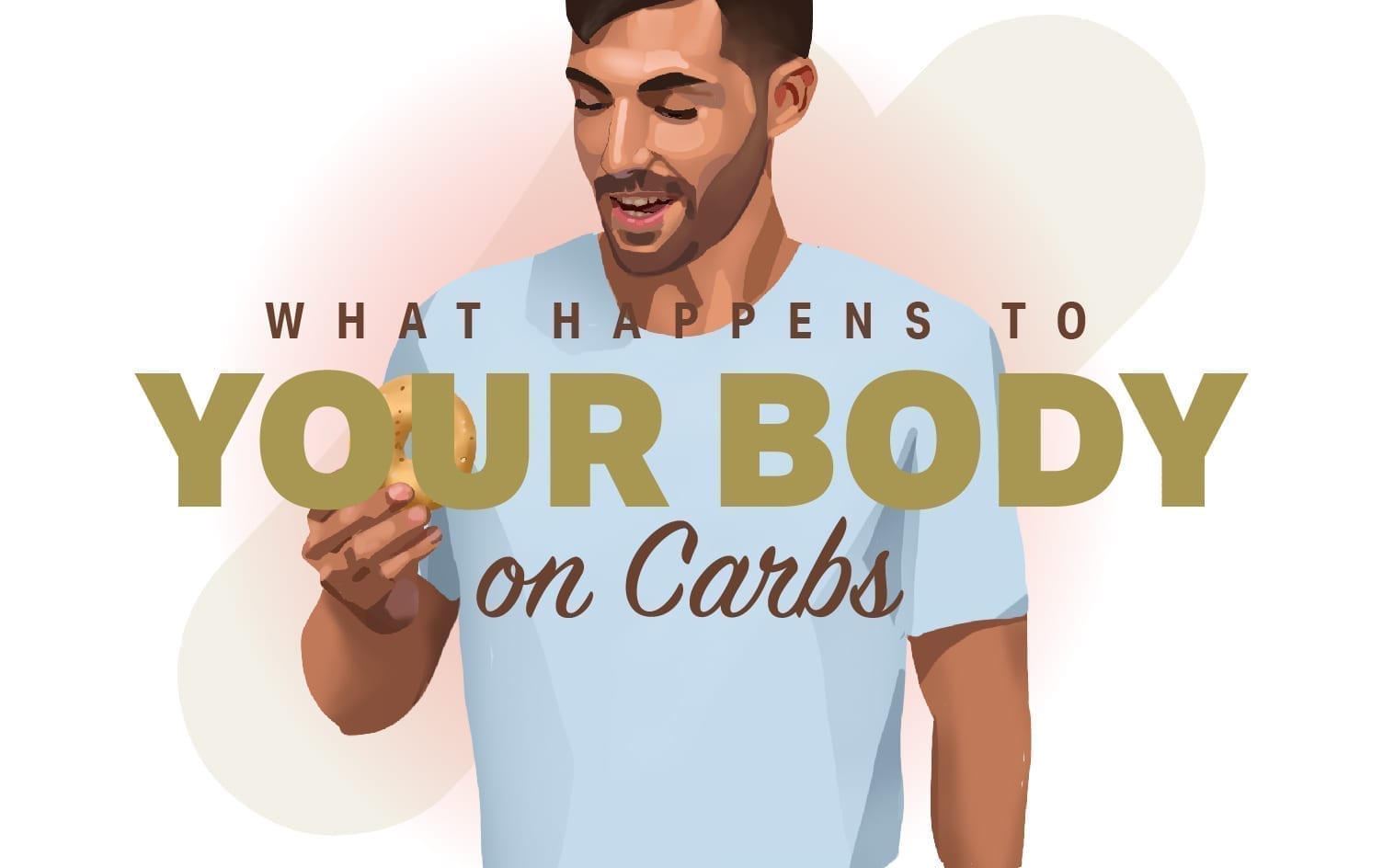Carbohydrates have garnered an undeserved reputation as being the ultimate bad guy when it comes to health. The reality is quite the opposite because carbs are necessary for countless body functions and serve as the body’s preferred source of energy. Here’s why carbs are so important and how cutting back drastically can backfire.

HOW WE DIGEST CARBS
Digestion of carbohydrates starts in the mouth, with an enzyme in the saliva called amylase, and continues in the stomach and small intestine. Glucose is the end product, which is then absorbed through the wall of the small intestine and taken either to the liver, to be stored as glycogen (aka energy), or travels through the bloodstream to be utilized in various parts of the body immediately. The exception here is fiber, which is broken down by the bacteria in our gut, contributing to a healthy gut microbiota. Excess glucose gets stored in the liver (which can lead to fatty liver disease) or it can also be converted into fat stored elsewhere in the body.
WHY WE NEED CARBS
All of our cells need carbs, especially the brain and muscles. Consuming adequate dietary fiber from carbs can also help the body maintain healthy cholesterol levels. Eating too few carbs, especially for a prolonged period, may negatively affect cognition, contribute to muscle loss and promote poor gut health.
Carbohydrates are also necessary to provide the body with energy for its daily activities, like walking, going to work and cooking dinner. They are even more important during physical activity and prolonged endurance activity, which rely on both stored and readily available carbohydrates consumed from food for energy.
HOW MANY CARBOHYDRATES SHOULD YOU EAT?
The Recommended Dietary Allowance (RDA) for carbohydrates is 130 grams per day. This is the minimum amount required to fuel an adult’s brain, red blood cells and central nervous system optimally, and many people (especially active folks) require more. Remember, without enough carbohydrates, the body starts breaking down lean muscle tissue for energy.
According to the Dietary Guidelines for Americans, carbohydrates should make up 45–65% of total calories. Everyone is different and there’s no one-size-fits-all when it comes to how many carbohydrates you should consume. For example, some endurance athletes might want a higher percentage of calories coming from carbs to fuel their training, while lower-carb diets (that prioritize quality carb sources) can be helpful for people with diabetes.
You can track your carb intake with an app like MyFitnessPal. It automatically targets 50% of your calories for carbs, but you can change this number to best suit your personal needs.
WHAT ARE THE BEST SOURCES OF CARBS?
Carbohydrate-containing foods generally fall into two types: simple and complex. Simple carbs (also known as sugar) consist of two building blocks (i.e., glucose, fructose and galactose) connected in a chain. Because the chains are short, they’re easy to break down, meaning they are digested and absorbed into the bloodstream quickly. This can provide fast energy (helpful for endurance training), but also leads to dips in blood sugar levels and subsequent energy crashes. If you find yourself constantly craving carbohydrate-rich foods (like sweets), it might be because you’re not eating enough carbs in general, so your body is craving quick energy.
Foods high in simple carbohydrates include sweeteners (table sugar, syrup, honey), candy and refined flour (Think: traditional white bread). Fruits, vegetables, beans and dairy contain simple carbs, too, but they come packaged with vitamins, minerals, fiber or protein, so they’re still healthy choices.
Complex carbs, on the other hand, are made of three or more sugars connected in a chain. Since these chains are longer, they take more time to break down, which is why they don’t taste as sweet and don’t spike blood sugar levels. They also contain fiber and tend to come in foods that also contain protein or healthy fats, as well as vitamins and minerals, making them more satiating. Foods high in complex carbohydrates include whole-wheat bread, brown rice, whole-wheat pasta, beans, whole grains and vegetables.
THE BOTTOM LINE
Carbs are an essential part of our diet and the body’s main source of fuel, so let’s start looking at them this way and break free from the fallacies diet culture is still trying to push. While it’s a good idea to prioritize complex carbs from whole-food sources, simple carbs have their place in a healthy diet, too. Whether you’re looking to fuel your next run or just want to enjoy a bowl of classic white flour pasta, it’s important to remember no food should be off-limits in a well-balanced diet.
READ MORE
> Your Body on Protein
> Your Body on Fat
> Your Body on Sugar
Unlock an experience that’s like having a dietitian, trainer and coach — right at your fingertips. Go Premium for expert guidance and exclusive tools that will help you reach your personal health goals.




